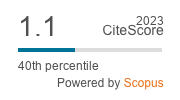Malaysian Journal of Mathematical Sciences, June 2014, Vol. 8(S)
Special Issue: The 6th Asia-Pacific Conference and Workshop in Quantum Information Science 2012 (APCWQIS2012)
Quantum Discord, CHSH Inequality and Hidden Variables
Kazuo Fujikawa
Corresponding Email: [email protected]
Received date: -
Accepted date: -
Abstract:
Hidden variables models are critically reassessed. It is first examined if the quantum discord is classically described by the hidden-variable model of Bell in the Hilbert space with $d = 2$. The criterion of vanishing quantum discord is related to the notion of reduction and, surprisingly, the hidden-variable model in $d = 2$, which has been believed to be consistent so far, is, in fact, inconsistent and excluded by the analysis of conditional measurement and reduction. The description of the full contents of quantum discord by the deterministic hidden-variables models is not possible. We also re-examine CHSH inequality. It is shown that the well-known prediction of CHSH inequality $|B| \leq 2$ for the CHSH operator $B$ introduced by Cirel'son is not unique. This non-uniqueness arises from the failure of linearity condition in the non-contextual hidden-variables model in $d = 4$ used by Bell and CHSH, in agreement with Gleason's theorem, which excludes $d = 4$ non-contextual hidden-variables models. If one imposes the linearity condition, their model is converted to a factored product of two $d = 2$ models, which describes quantum mechanical separable states. The CHSH inequality thus does not test the hidden variables model in $d = 4$. This observation is consistent with an application of the CHSH inequality to quantum cryptography by Ekert, which is based on mixed separable states without referring to dispersion-free representations. As for hidden-variables models, there exist no viable local non-contextual models in any dimensions.
Keywords: -









